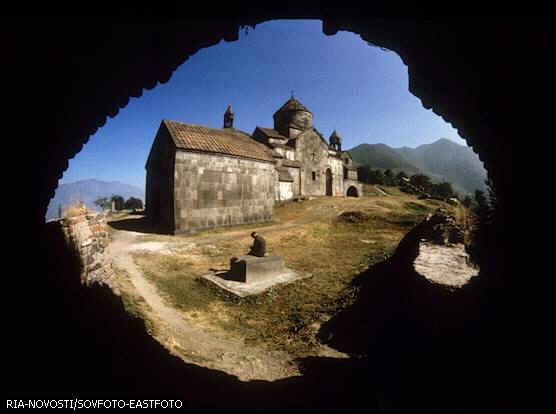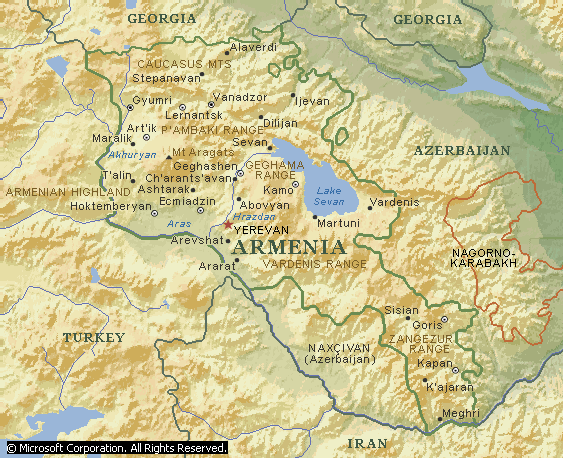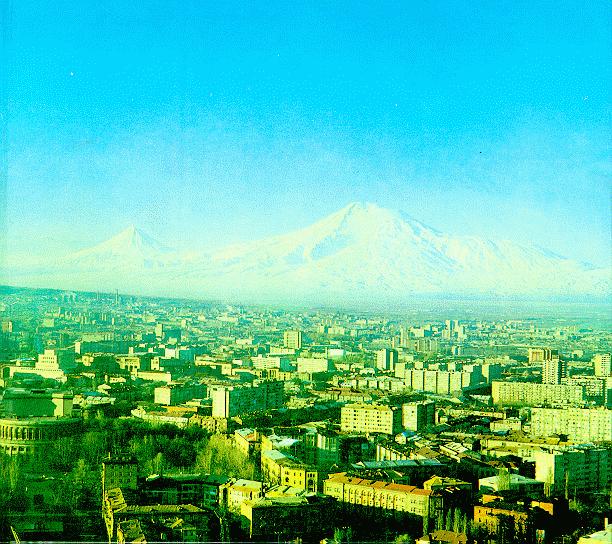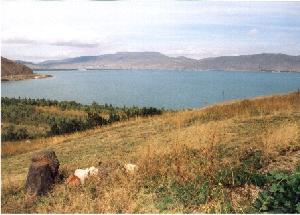I. Land & Resources
- Population Characteristics
- Political Divisions
- Principal Cities
- Religion
- Language
- Education
- Culture
- Agriculture
- Mining
- Manufacturing
- Energy
- Currency & Banking
- Commerce & Trade
- Labour
- Transport
- Communications
- Executive & Legislature
- Political Parties
- Judiciary
- local Government
- Health & Welfare
- Defence
- International Organizations
- Invasion By Foreign Powers
- Independence
Armenia occupies about 29,800 sq km (11,500 sq mi) of the north-eastern portion of the Armenian Highland, an extensive upland area that extends as far south as Lake Van in Turkey. Armenia is characterized by high elevations and is extremely mountainous. Its average elevation is about 1,800 m (5,900 ft). Mount Aragats is the highest point in the republic, with an elevation of 4,090 m (about 13,420 ft). Mountain ranges in the republic include the P’ambaki, Geghama, Vardenis, and Zangezur branches of the Lesser Caucasus (Malyy Kavkaz) mountain system.
Armenia is covered by a dense network of small rivers and streams that are part of the Aras-Kura river basin. Due to the mountainous terrain, waterfalls and rapids are frequent. The republic contains numerous mountain lakes, the largest being Lake Sevan, which holds more than 90 per cent of all standing water in Armenia.
Armenia’s climate is characteristically continental, with wide temperature variations. Yerevan has an average January temperature of -3° C (26.6° F), and warm summers, with average August temperatures of 25° C (77° F). The Armenian plateaux have a moderating effect on temperatures. Rainfall varies greatly by location and elevation, with the greatest precipitation occurring on mountain slopes. The most arid region of the country is found along the River Aras, where average annual precipitation is less than 300 mm (12 in) per year.
There are few natural resources currently exploited, but there is small-scale extraction of copper, gold, silver, molybdenum, and iron ore. Deposits of mineral salt, calcium oxide, and carbon remain to be exploited on a large scale, and a joint-venture deal has been signed to develop gold processing facilities in Ararat. Air quality is generally poor, but it improved in 1992, when economic downturn resulted in factories operating below their capacity. Contamination of water supplies with oil derivatives, chloride, nitrates, heavy metals, and other pollutants, has affected domestic supplies and supplies for agriculture.
Climate, soil, and vegetation vary greatly throughout Armenia, which contains twice as many soil types as European Russia. Vegetation typical of alpine, semi-desert, and steppe regions dominates much of the republic, although the extreme south-eastern and north-eastern portions contain forests of beech and oak. The republic’s fauna includes wild boar, jackal, lynx, and Syrian bear.
Lake Sevan
Sevan is
closer to the sky than to the earth




